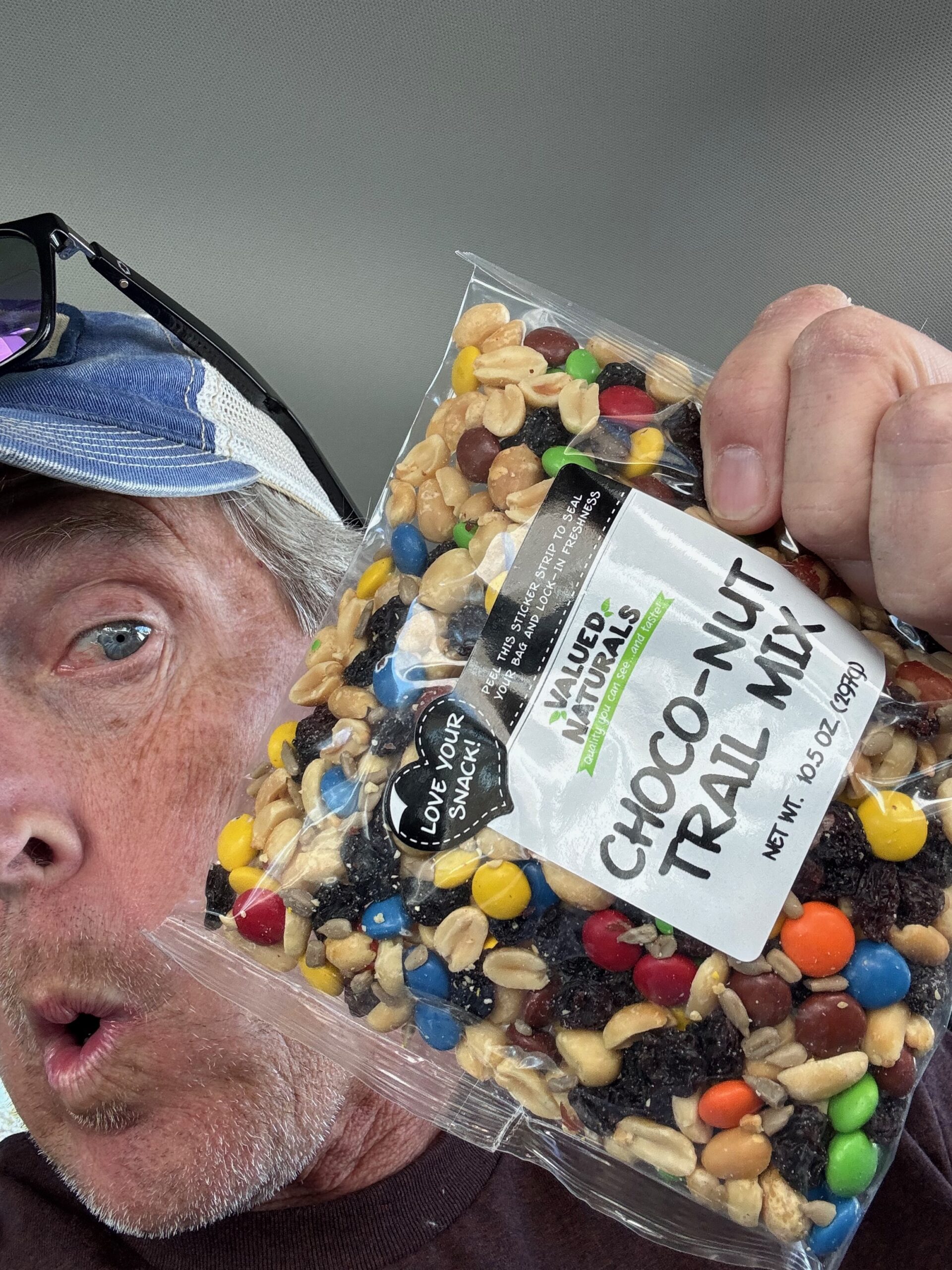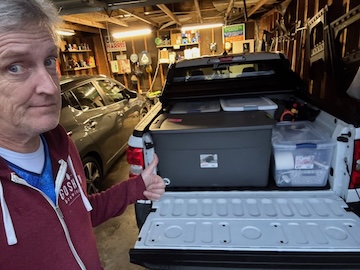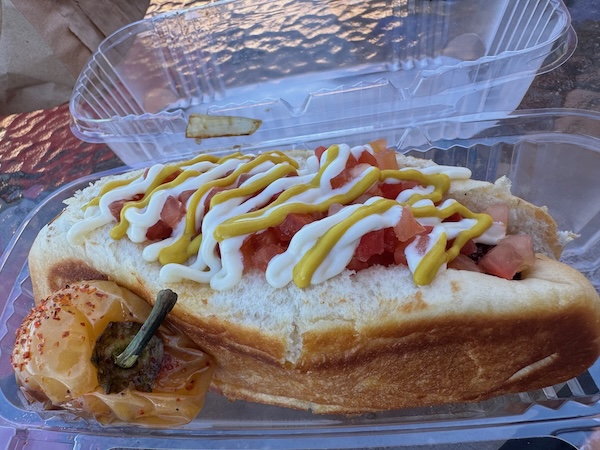At some point during our time here in Picture Rocks, I found myself standing in the fluorescent glow of the Speedway gas station, looking for trail mix. Not just any trail mix—Choco-Nut Trail Mix, the kind with the generic M&Ms, almonds, raisins, peanuts, and maybe something else that’s only there for color or texture. It had become a small ritual, a modest joy, part of the winding-down routine on late afternoons when errands and heat had taken their toll.
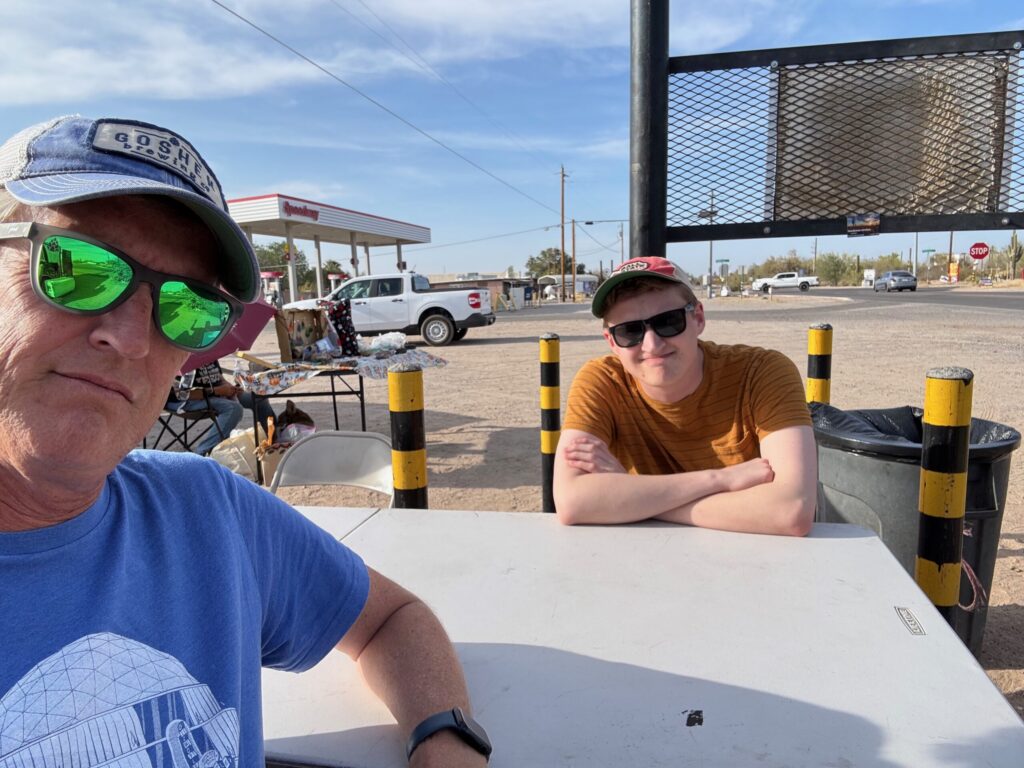
But today, the basket where it usually sat was empty.
No big deal, I told myself. There’s another store just across the intersection—two Speedway gas stations, same owner, kitty-corner to one another—a quirk of Picture Rocks that seems to match its name. It’s not really a town, more like a long, sunbaked stretch of desert life, scattered RVs and single-wides, local characters, and cacti with more permanence than people.
Still, no trail mix.
I checked again the next day. Still nothing.
Now I was no longer casually looking. I was on a mission.
Somewhere between the third and fourth store visit, I realized I was fixated. The choco-nut trail mix had become the thing. The placeholder for whatever emotional craving I wasn’t naming. I didn’t want trail mix—I wanted something to land, something that made the day feel like it added up. It wasn’t about hunger. It was about completion.
The Etiquette of the Mix
Meanwhile, back at the tiny house, Lori and I had started our low-stakes bickering routine. It had become a recurring bit: the etiquette of trail mix consumption.
Now, if you ask me (and I am obviously correct in this), trail mix is a contract. You don’t cherry-pick the M&Ms or the chocolate pieces. You take what you get. No picking. No cheating. It’s not a candy bowl. It’s a mix. The magic is in the blend.
But lately, I’d reach into the bag and pull out only peanuts. Sometimes raisins. Never chocolate. And while I didn’t want to accuse anyone, it became clear that my trail mix had been curated.
“I don’t know what you’re talking about,” Lori would say, not quite convincingly.
“Just saying,” I’d reply, shaking the bag. “No chocolate left. That’s all I’m saying.”
We were laughing, mostly. But also, there’s something real in that tension. Something about what we take and what we leave—in food, in relationships, in daily choices.
The Weight of Small Things
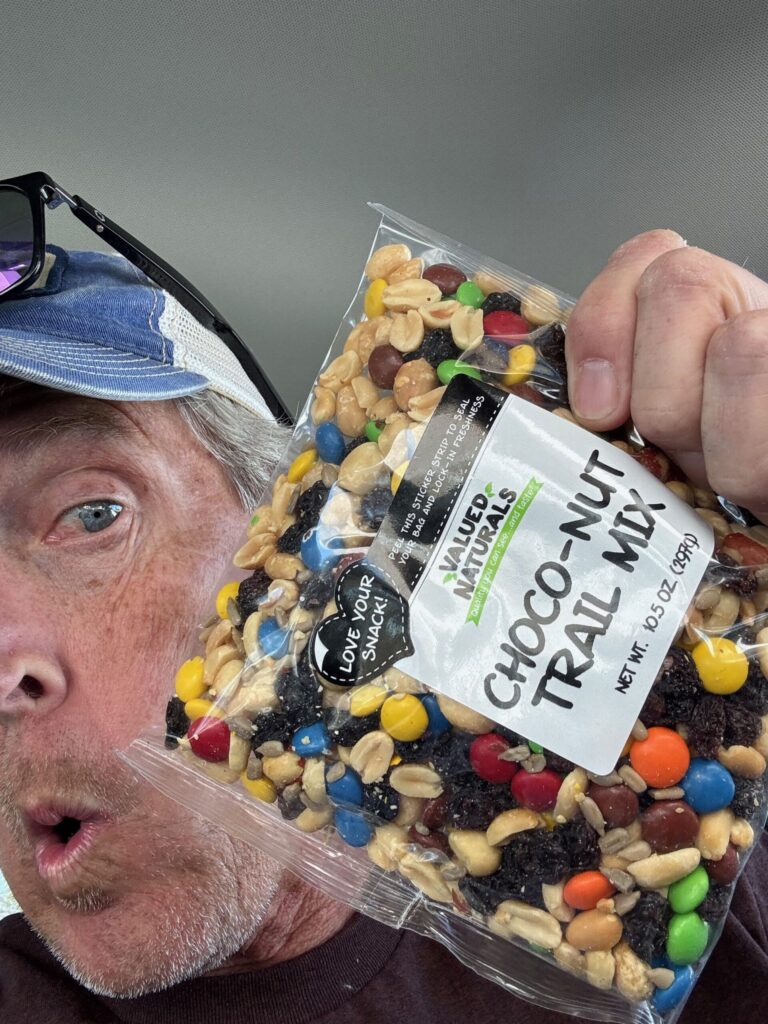
We all have our version of trail mix. The thing we fixate on. The small, seemingly inconsequential item that holds a bigger emotional weight. Maybe it’s a routine. A job title. A piece of gear. A past success. Or the idea that something—if we just had it—would make us feel a little more in control.
But here’s the truth we keep running into out here in the desert: You can’t take it all with you. Not in a tiny house. Not in a marriage. Not in a day packed with too much. And certainly not into whatever future we imagine is waiting for us.
When we packed for Arizona, we followed The Rule of the Truck Bed: if it didn’t fit in the bed of the Maverick, it didn’t come. No trailer. No backup storage. Just what was needed for this leg of the journey.
And we’ve mostly stuck to it. But emotionally? That’s harder. We carry things we think we need—resentments, expectations, fears, stories we’re not quite ready to rewrite.
We pick out the chocolate and try to pretend we’re still enjoying the mix.
This Is the Mix We’ve Got
Even Colin, home for part of his spring break, caught us mid-bicker over the trail mix. At some point, he just shook his head—maybe amused, maybe wondering how two grown adults could spend so much time debating snack protocol:
“Please don’t discuss this anymore.’”
But he wasn’t wrong. When you add a third person (and a cat) into 233 square feet of tiny house life, everything gets amplified—the footsteps, the schedules, the preferences, the snacks. Even our jokes take up space.
And yet, we make it work. Because this is the mix we’ve got.
Perhaps the real point isn’t whether we got the chocolate or the peanuts or the last word. It’s whether we can sit in a small space together and keep laughing. Keep adjusting. Keep showing up, even when the mix isn’t perfect.
That’s what the desert teaches, what the tiny house reinforces, and what I keep learning: you don’t get to curate every detail. But if you can stay present with what remains—if you can learn to appreciate the parts you didn’t choose—you might just find it’s enough.
Maybe even more than enough.

